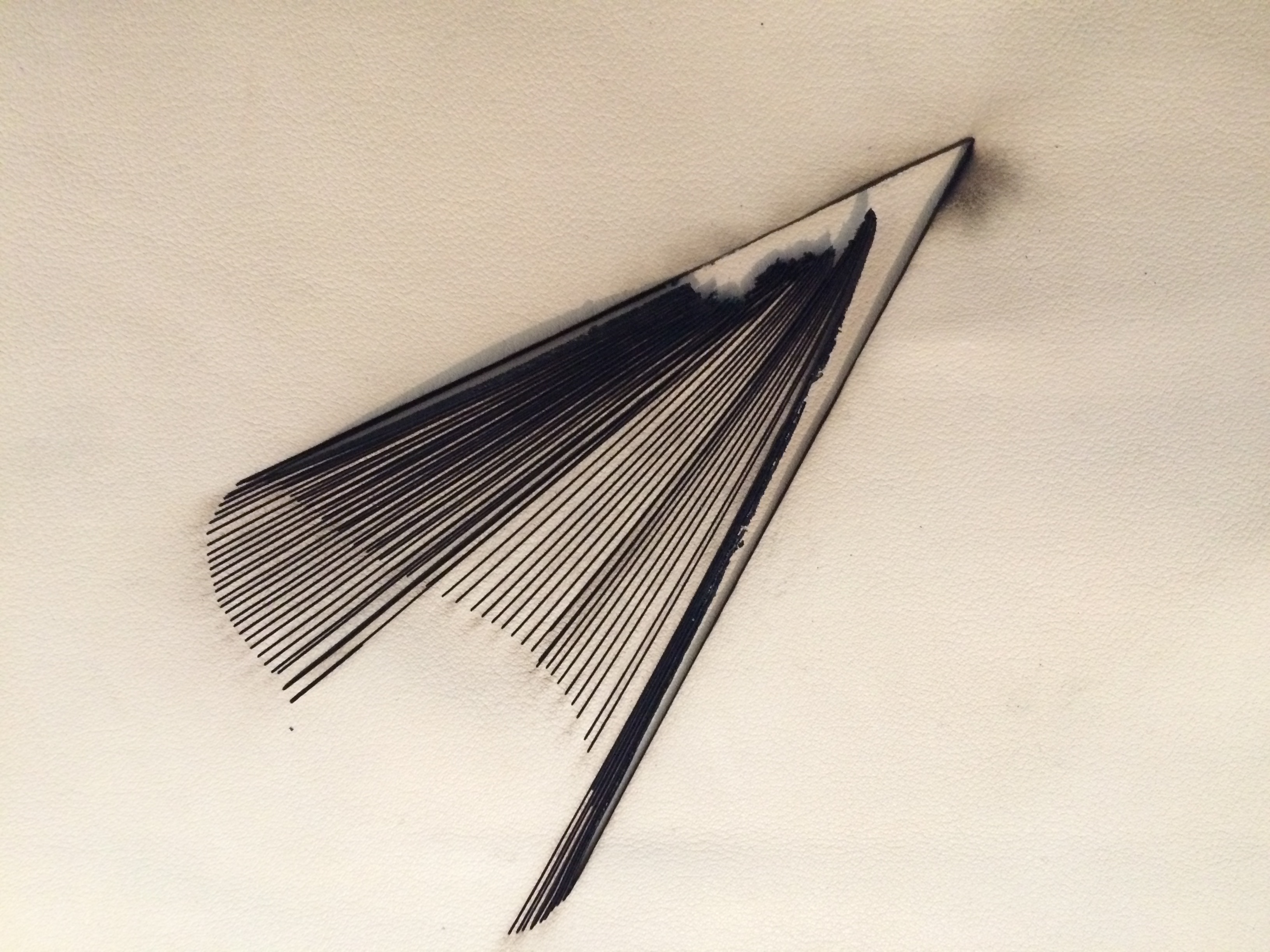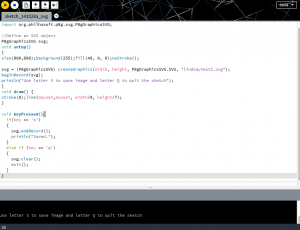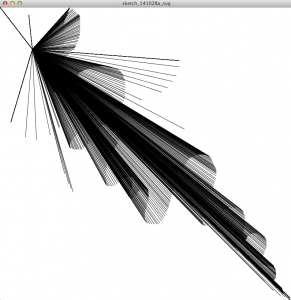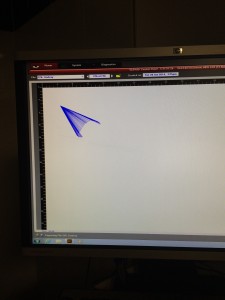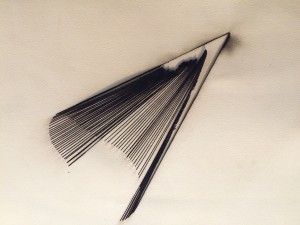Step one: write a code in Processing.
Plain text is here:
//Import librarie
import org.philhosoft.p8g.svg.
//Define an SVG object
P8gGraphicsSVG svg;
void setup()
{
size(800,800);background(255);
svg = (P8gGraphicsSVG) createGraphics(width, height, P8gGraphicsSVG.SVG, “lindsaytest2.svg”);
beginRecord(svg);
println(“Use letter S to save image and letter Q to quit the sketch”);
}
void draw() {
stroke(0);line(mouseX,mouseY, width/9, height/7);
}
void keyPressed(){
if(key == ‘s’)
{
svg.endRecord();
println(“Saved.”);
}
else if (key == ‘q’)
{
svg.clear();
exit();
}
}
Step two:
When you get something workable, play, and draw pretty things with your mouse:
Step three:
Then save as a SVG file. This was a giant problem for me, as when I saved as a SVG file, the image saved only as a single line. This was eventually resolved by sending the code to a friend whose computer magically saved it properly.
Step four: send to laser cutter and watch the laser’s progress.
Step five: be really careful about this because the laser will likely go over the same spot over and over again, thereby setting your work on smoldering fire. Probably best to stop it when your lasered material starts to burn.
Step six: back the smoldered material with some extra material. Enjoy the pretty organic lines that contrast with all of the straight geometric lines. Enjoy.

